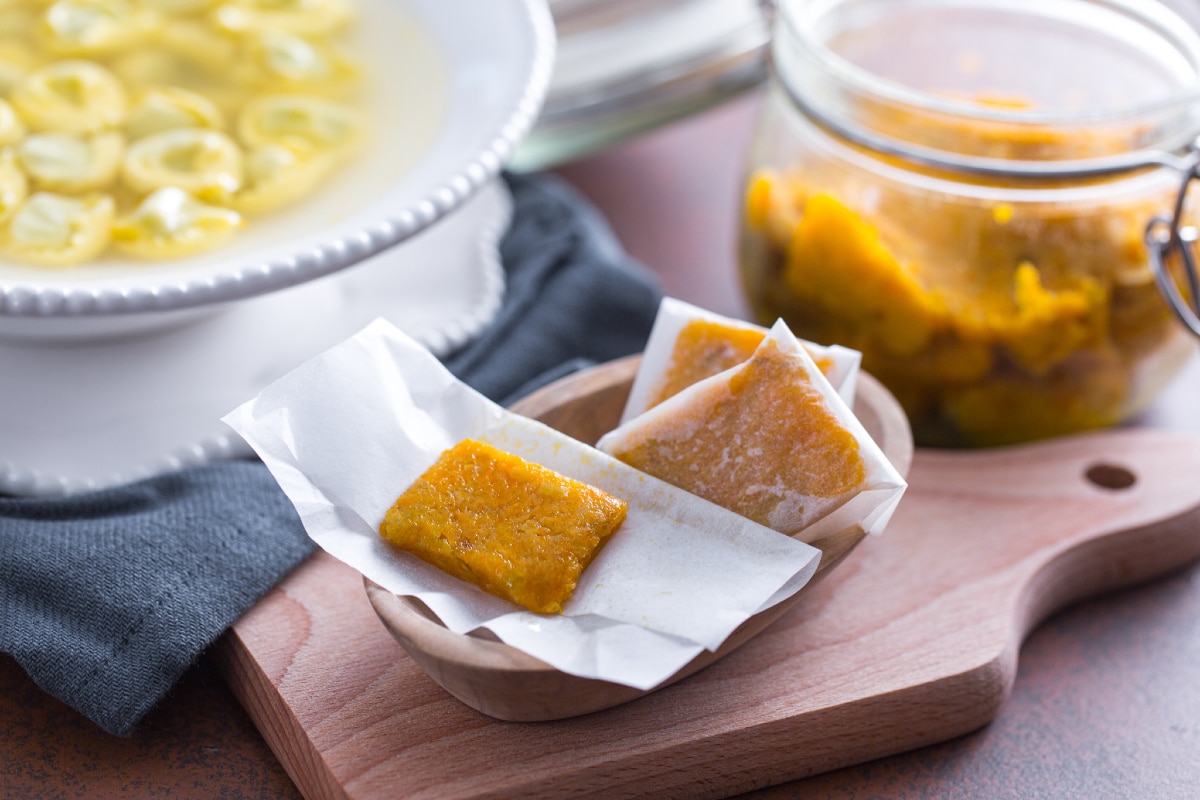Vegetable soup
- Easy
- 1 h 20 min

Vegetable bouillon cubes are an extremely valuable ally in cooking because all you need to do is dissolve them in water, and then in a snap you’ve got broth to flavor risottos, pastas, and dilute sauces that are too thick. Lots of you have written to us saying that often, it takes too long to make broth, whether meat or vegetable, and that you usually end up going for the faster and more convenient bouillon cube from the supermarket. But why buy them when you can make your own at home and still store them for a long time? With our vegetable bouillon cube recipe, it will be a cinch – and you’ll have the advantage of being able to choose your favorite vegetables. And once you’ve learned all the secrets to preparing a great vegetable bouillon cube, you’ll surely want to jump right into self-production and move on to the next step: granulated bouillon. But, for now, let’s go one step at a time and start with the cubes. Come on!

To make the vegetable bouillon cubes, start by washing the carrots, celery, and leek 1. Next, cut the vegetables, including the peeled onion, into fairly small cubes 2, and then move to the stove. Place the onion and carrot in a nonstick frying pan 3.

Now add the celery and leek 4. Pour over the oil 5 and cook for about 15 minutes. At this point, add the fine salt 6.

Continue to cook for around 5-6 minutes, stirring every so often 7. Now that the vegetables are soft and full of flavor 8, transfer them to a food processor 9.

Blitz until you get a fairly even purée 10. Pour this purée back into the pan 11 and cook for another 15 minutes, roughly, over medium-high heat, stirring often to get the mixture to dry out without burning 12.

As soon as the mixture is nice and dry, transfer to a rectangular baking pan lined with parchment paper 13. Level the surface with a spatula or the back of a spoon 14 and cover with plastic wrap or parchment paper. Let this set in the freezer for 10-12 hours 15.

After this time has passed, remove the parchment paper from the solid mixture (which won’t be completely frozen due to the salt) 16 and divide it into 20 small cubes of around 1 oz (30 g) each 17. Your vegetable bouillon cubes are ready to be stored or used 18!

To use the vegetable bouillon cubes, we recommend dissolving one 1-oz (30-g) cube in 4¼ cups (1 L) of water 19. Stir well to make it dissolve completely 20, and your vegetable broth will be ready to go 21!